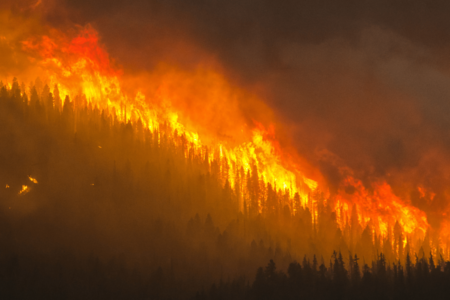Effective Disposal of Invasive Plants
Spring has sprung and so have those tenacious invasive plants, popping up in your garden. People have introduced a number of plants to this area as cultivated ornamentals which have jumped the fence to neighbouring yards and alleys to then move on to colonize forests, grasslands and wetlands. As pretty as some of these plants are, because they arrive in Canada without their natural predators to keep them in balance, they can spread rapidly, forming dense patches over huge areas causing irreversible impact to ecosystems, agriculture and even man made structures. Around the world, invasive species are considered the second largest contributor to the loss of biodiversity (e.g. extinction of species), next to the loss of habitat.
Japanese knotweed (Fallopia cuspidatum) and Giant knotweed (Polygonum sachalinese) which people commonly call Bamboo in the Kootenays, can damage rock walls, concrete paths and foundations with their massive spreading root systems are nearly impossible to contain or remove once they are established. Concern over knotweed has been mounting around the world as more and more native habitat is being lost to this plant, particularly in riparian areas where it is taking over habitat and causing soil erosion.
If you wish to rid your garden of invasive plants and control the spread of them, care must be taken with their handling and disposal. When digging or cutting invasive plants, you may wish to wear gloves and long sleeves because some of these plants, like Spotted knapweed , Scotch broom and Yellow flag iris contain irritants. Don’t pass along divisions or seedlings of invasive plants like Japanese knotweed, Yellow flag iris (Iris pseudacorus) or Policeman’s helmet (Impatiens glandulifera) to friends or neighbors, you are just passing on a problem.
Since many invasive plant species are prolific seeders (Purple loosestrife can produce up to 2.5 million seeds per plant), it is very important to deal with them before they go to seed or if in flower or seed, to cut the seed heads off and bag them before removing the rest of the plant. Some of these species also reproduce by sprouting from their root systems, so when pulling or digging care must be taken to remove all of the root.
Once removed, disposing of these plants is relatively easy, but it is important to do so responsibly in order to not spread them to new areas. Keep them separate from your other yard waste by bagging them and taking them to your local landfill, where they accept invasive plants free of charge in both the Regional Districts of Kootenay Boundary(RDKB) and Central Kootenay( RDCK). Composting is another alternative, however it is not recommended for all species, especially those that propagate from root fragments or seed quickly when in flower. Your compost needs to reach temperatures of 50°-70° C to kill soft seed and most home composts don’t have enough mass to reach such high temperatures. Contained burning in a fire pit is an effective method of destroying invasive plant matter as well, if it is allowed in your area.
Please do not dispose of your yard waste anywhere but in your own yard or at your area landfill, and take some time to read about methods of weed control and more detailed information about identification of invasive plants in this area at the Central Kootenay Invasive Plant Committee website: www.kootneayweeds.com If you have questions, please call us at (250) 352-1160 or toll free to the Invasive Plant Council of BC at 1-888-WEEDSBC.
–contributed by Eva Cameron


























Comments